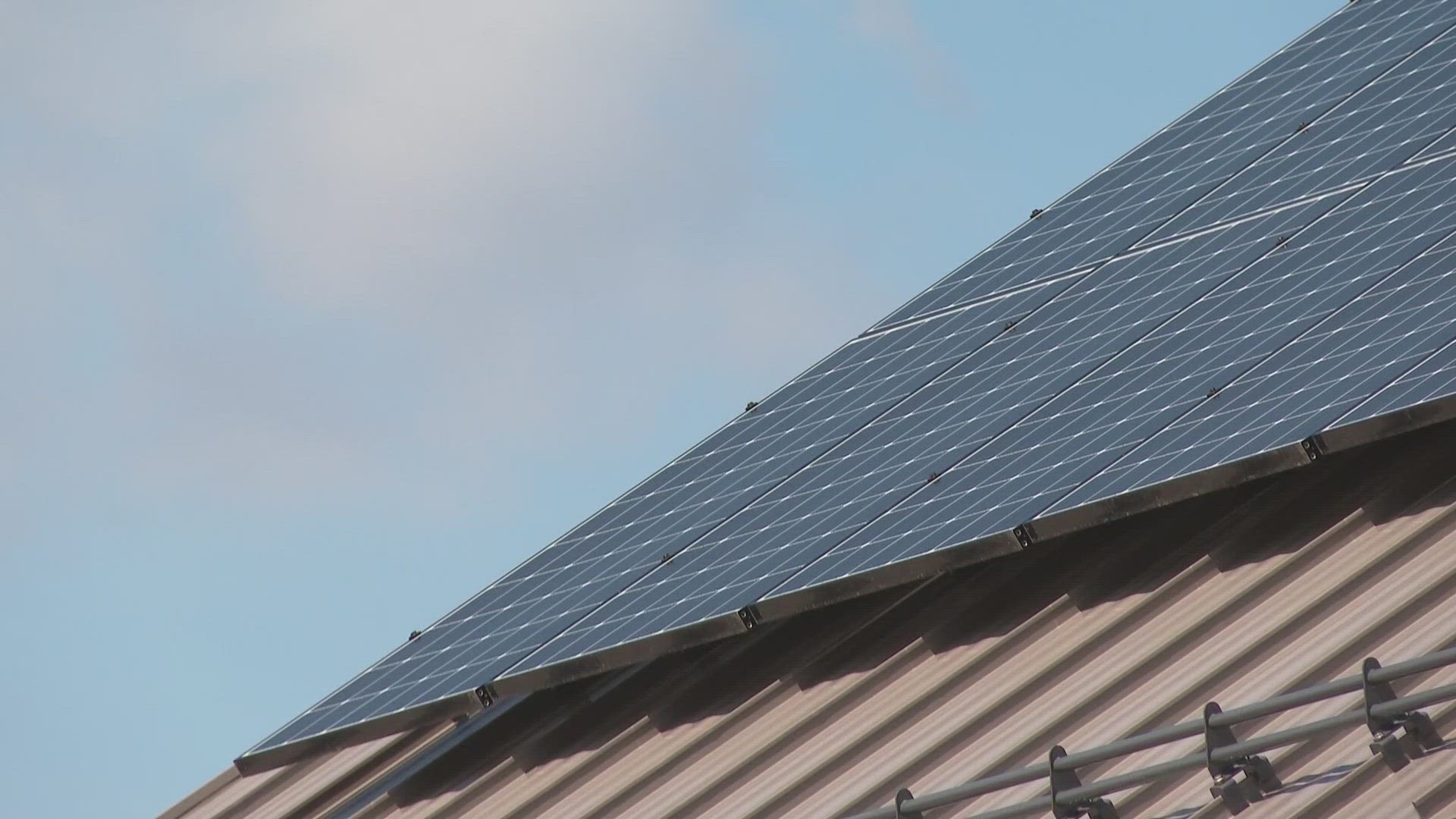AUGUSTA, Maine — Maine's largest electricity company submitted a filing Friday that outlines an increase in costs because of incentives for solar companies operating in the state.
Central Maine Power sent its Stranded Costs Filing to the Maine Public Utilities Commission on Friday. The PUC will spend the next two months reviewing it. Changes will be reflected July 1.
For now, that filing suggests the average Maine electricity bill will increase by about 12 percent; approximately one-third of that cost is directly tied to Net Energy Billing.
The Net Energy Billing program is funded by "stranded costs," which is the cost to buy power from renewable energy developers, such as solar companies. Electricity rate payers shoulder the stranded cost by paying it to the solar development companies. Maine's utility companies simply collect those extra fees and pass 100 percent of them along to the solar companies. CMP and Versant Power do not make any profit. This mechanism funds Maine's Net Energy Billing program.
"We've seen these increased costs coming," Maine Public Advocate Bill Harwood said. "That's a big increase for a lot of ratepayers who are living on tight budget, who are living on fixed income."
Essentially, consumers are paying a tax on renewable energy. Harwood said the Maine Office of the Public Advocate is in favor of renewable energy, including solar.
"We've got to phase out the extent to which we rely on fossil fuels to generate our electricity," Harwood said. "But, and there's the big 'but,' we don't want to see a subsidy for renewable energy any larger than it needs to be. And that's what we're concerned about with that energy billing. It is a very large subsidy that we believe is larger than it needs to be to get the solar energy that we all want. And that's where that this filing really makes that front and center."
In 2019, Maine expanded its Net Energy Billing program, also known as Community Solar. The program is designed to attract more solar production in Maine. It allows customers to offset their bills by using electricity produced by renewable sources, such as solar panels. Eligible solar projects receive credit for each kWh of electricity they generate. Utility customers can sign up with the owner of a solar project to receive a share of these credits generated by the project.
Essentially, if the solar farm you sign up with generates more electricity than you use, you get a credit on your bill. But the cost savings those subscribers get are paid for by all other utility customers who do not participate.
You may see a higher bill from your solar company in the summer, when more energy is being generated, but you can use those extra credits to offset your bills in the winter, when less solar energy may be generated, according to Harwood.
The program was very successful in attracting solar development, and Maine has seen significant solar growth in recent years. Net Energy Billing contracts are based on 20-year terms, meaning the total cost of the program will surpass over $2 billion over the next two decades.
CMP's filing shows community solar developers are receiving higher-than-expected rates for their power. The Maine Legislature tied the price of this power to fossil fuel-derived electricity rates. The cost to generate solar power is actually far lower than what developers are paid.
"Now, the real question is, could we get that solar for something less than a $4 billion subsidy?" Harwood said. "How big of a carrot do we dangle in front of these people? And once we dangle the carrot, is it OK to say, 'On second thought, the carrot's a little bigger than it needed to be, so would you guys be able to live with a smaller carrot?'"
The filing found the Net Energy Billing Program accounted for $116 million, or two-thirds, of Friday's $183.2 million filing. Net Energy Billing costs recovered in rates has increased from $7.5 million in 2022, to $98 million in 2023, to $116 million in 2024.
There are three big factors at play:
- Supply cost, which is the cost to generate the electricity you use
- Delivery cost, which is the cost of delivering the electricity to you
- Stranded cost
Most Mainers choose the standard offer price for their supply cost.
Overall, the average delivery price for residential customer goes up 24.13 percent. That standard offer supply cost dropped from 2023 to 2024 by nearly 37 percent.
Central Maine Power expects customers will still benefit from lower prices in 2024 compared to 2023 because of previous reductions in supply and delivery costs that took effect Jan. 1, 2024.
"If we spend a lot of money on this project, it's dollars we don't have to spend on other projects where we might get a bigger return on our investment," Harwood said.
NEWS CENTER Maine reached out for comment from Maine Community Solar, which educates consumers and businesses about the benefits of community solar programs, but we have not yet received a reply.

